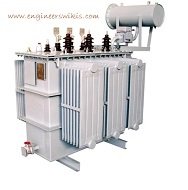
Power transformers are essential components in electrical power systems that transfer electrical energy between different voltage levels. They can be connected in various configurations to meet specific system requirements. The most common power transformer connections include:
- Step-up Transformers: These transformers increase the voltage level from the primary winding (lower voltage) to the secondary winding (higher voltage). The primary winding typically has fewer turns than the secondary winding, resulting in voltage amplification. Step-up transformers are commonly used at power generation stations to increase the voltage for long-distance transmission.
- Step-down Transformers: These transformers decrease the voltage level from the primary winding (higher voltage) to the secondary winding (lower voltage). The primary winding usually has more turns than the secondary winding, resulting in voltage reduction. Step-down transformers are commonly used in distribution networks to lower the voltage levels for commercial, industrial, and residential use.
- Delta-Wye (Dy11) Connection: This connection is widely used in power systems. In the primary winding, the three-phase windings are connected in a delta (Δ) configuration, while the secondary winding is connected in a wye (Y) configuration. The neutral point of the secondary winding is typically grounded. The Dy11 connection allows for the transformation between three-phase voltages, such as from a higher voltage delta system to a lower voltage wye system.
- Wye-Delta (Yd1) Connection: This connection is the reverse of the Dy11 connection. The primary winding is connected in a wye (Y) configuration, while the secondary winding is connected in a delta (Δ) configuration. The Yd1 connection is used to step up the voltage from a wye system to a delta system.
- Delta-Delta (Dd0) Connection: In this connection, both the primary and secondary windings are connected in a delta (Δ) configuration. The Dd0 connection is commonly used in applications where a voltage transformation is not required, such as in large industrial systems or where the primary and secondary voltages are the same.
- Auto-Transformer Connection: An auto-transformer has a single winding that acts as both the primary and secondary winding. It is used when a small voltage adjustment is required between two voltage levels. The auto-transformer connection is more economical compared to the conventional two-winding transformers.
